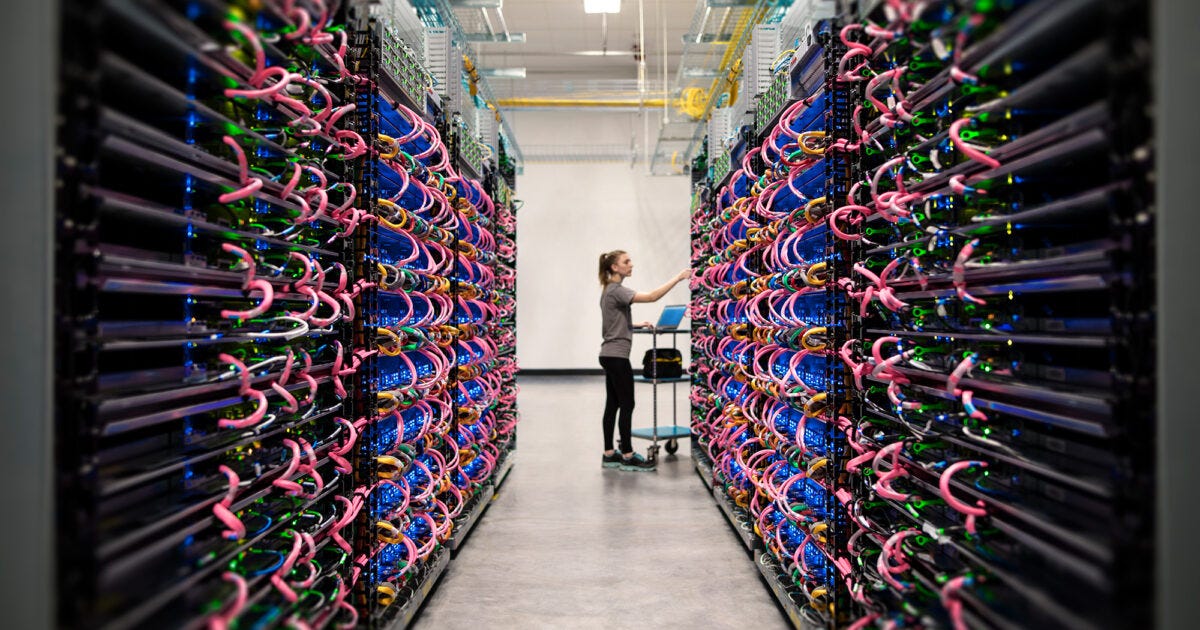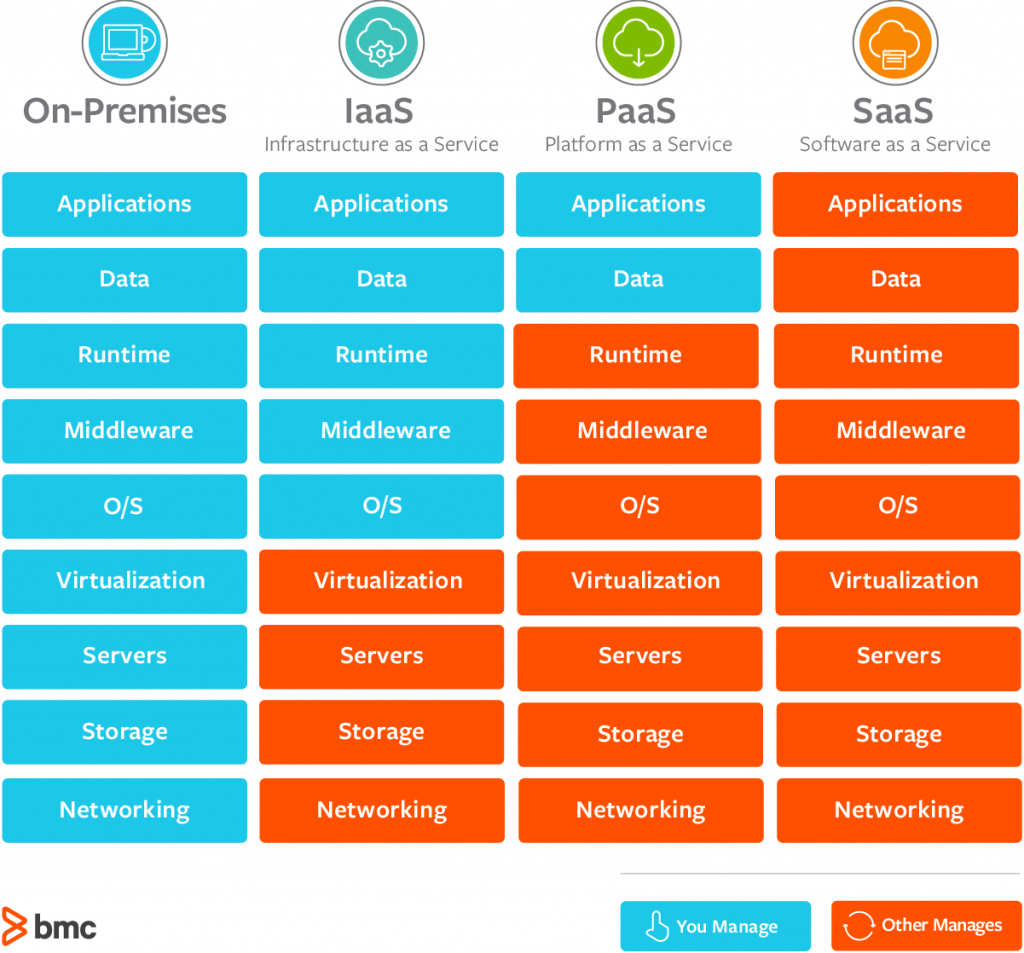Cloud Computing Is Just Like Making A Pizza
How I Used This Analogy To Explain What I Do To My Mom
Have you ever wondered what “the cloud” is and how it works?
My mom had the same question a little while ago.
She really thought it had something to do with satellites or some balloons flying over.
When she asked me this question, I realized that explaining something like this needed a more relatable approach.
So, instead of diving into an ocean of technical jargon like On Premise, IaaS, PaaS, and SaaS, I relied on the universal love of pizza to give her some clarity.
Here’s how I tried to turn this complex topic into a delightful and digestible conversation.
Do You Want To Cook It or Just Eat It?
The first thing I needed to demystify was this:
The cloud is not something in the sky. In reality, it’s just a bunch of computers sitting in a room being rented for other people to use.
Once you get that out of the way, you can start explaining the pizza thing.
In reality, companies like Amazon have a bunch of computers sitting inside a highly secured warehouse, known as a data center, which they rent out to other companies to store their data (like the pictures in your phone), or create applications that you can use.
This is what that looks like:
Yes. All of that is a combo of computers/servers/networks. Cool, huh?
Anyways … let’s get to the pizza thing.
The concept of using pizza to explain cloud computing is not a new one.
In fact, an IBM engineer was credited with this comparison years ago.
But why pizza?
Probably because it's one of those few thing we all love (I mean, you should distrust anyone who doesn’t like pizza, in my opinion), but also because there are so many ways to experience and eat it.
Think about it. You can:
Make the pizza yourself: Here you have complete control. You pick the cheese, toppings, and even the thickness of the crust. It's quite a little bit of work, especially if you decide to make the dough, but it gives you so much freedom and flexibility.
Buy a frozen pizza: This is more of a “convenience” move. You can’t put exactly what you like on the pizza, but it saves you time and effort. You still have to put it in the oven, maybe add some extra toppings of your choice, cut it and that’s it. You may have to live with that “freezer taste”, but you have to do the bare minimum.
Get the pizza delivered: You can call a restaurant of your choice and have the pizza delivered to you. In this case, they take care of everything. You just have to set up the table with a plate and you can eat it right away.
Eat the pizza in a restaurant: Here, you just enjoy the ride. You pick a nice restaurant in the area, ask for the menu, and order whatever makes your taste buds salivate. The waiter brings you the pizza to your table. It's hassle-free and allows you to focus on enjoying the meal rather than worrying about the process.
You’re probably either getting hungry or impatient. Bear with me.
Cloud Computing Is All About Flexibility
In the realm of cloud computing, the aforementioned pizza methods have their parallels in four core delivery models.
In other words, to what extent a client can use all those racks with servers and computers in the picture above.
Each delivery model provides a different level of control and management complexity, very much like our pizza scenarios.
Let’s go through each one:
On Premises - Making The Pizza
On Premises is the equivalent of making your pizza from scratch.
This means buying or renting servers, installing software, and handling all the maintenance and updates.
Companies like Amazon Web Services (AWS) and Google Cloud offer IaaS solutions where you can rent virtual machines or storage space.
It’s like choosing your crust, sauce, cheese, and toppings, then baking the pizza in your own oven.
The end product is entirely your creation, but it comes with the responsibility of managing the whole tech stack.
Infrastructure As A Service (IaaS) - Buying a Frozen Pizza
Just like the frozen pizza gives you the basic ingredients ready to go, IaaS provides the basic building blocks (server, storage, networking) but leaves it to you to handle the "baking" (i.e., setting up the OS, installing software, managing databases, etc.).
You don't have to worry about the underlying infrastructure, but you still maintain control over the virtualization, OS, and applications.
Platform As A Service (PaaS) - Getting The Pizza Delivered
With PaaS, the focus is more on developing applications on infrastructure (or a platform) that already works.
You don’t manage the racks, the servers, the operating system, etc.
Services like Heroku or Microsoft's Azure DevOps offer you an environment where you can deploy your code without worrying about the underlying hardware or system software.
You still have some leeway to customize your application, but you’re not involved in the nitty-gritty details of server upkeep or security patching.
Software As A Service (SaaS) - Eating Pizza In A Restaurant
The SaaS model is the ultimate in user convenience.
You’re probably more familiar with this one than any other.
Companies like Salesforce and Adobe offer complete applications that run in the cloud.
You simply subscribe and start using them.
No need to worry about anything technical.
Imagine walking into a pizzeria and ordering a Margherita.
You don’t need to worry about how the oven is heated or what kind of cheese is used; you just enjoy the finished product.
Here’s a great graphic that helps you visualize the entire tech stack and what level of responsibility each gives the cloud provider and the client.
By the end of our conversation, my mom was quite surprised that the cloud wasn't some esoteric concept from a sci-fi novel.
So, next time you find yourself needing to explain what the cloud is to someone who’s not well-versed in technology, just ask them: "How do you like your pizza?"
If you like what you’re reading, please share it with a friend or family member to spread the word.
Wish you a fantastic Sunday and an amazing start of the week (from London this time)!
Speak soon!

Antonio.






